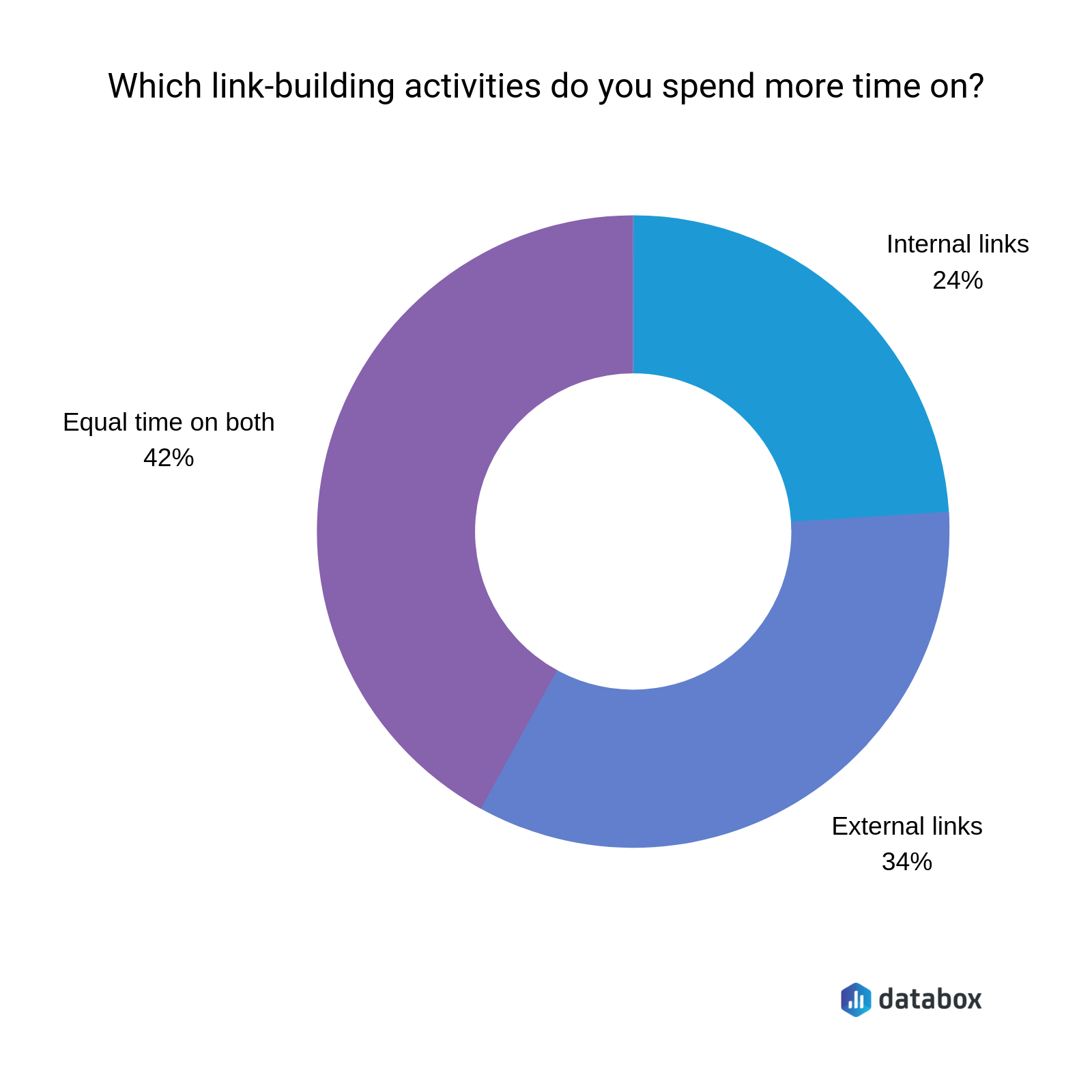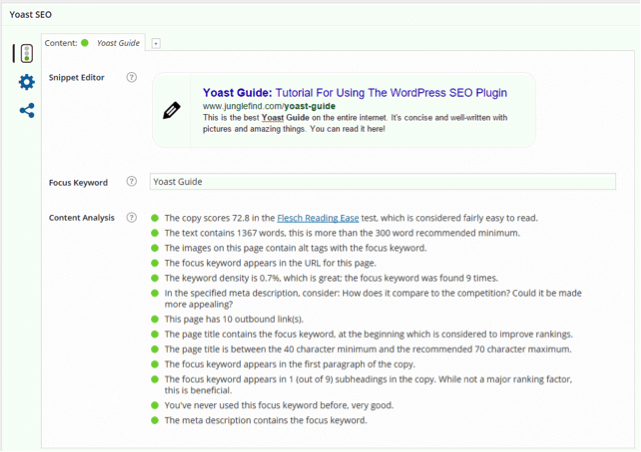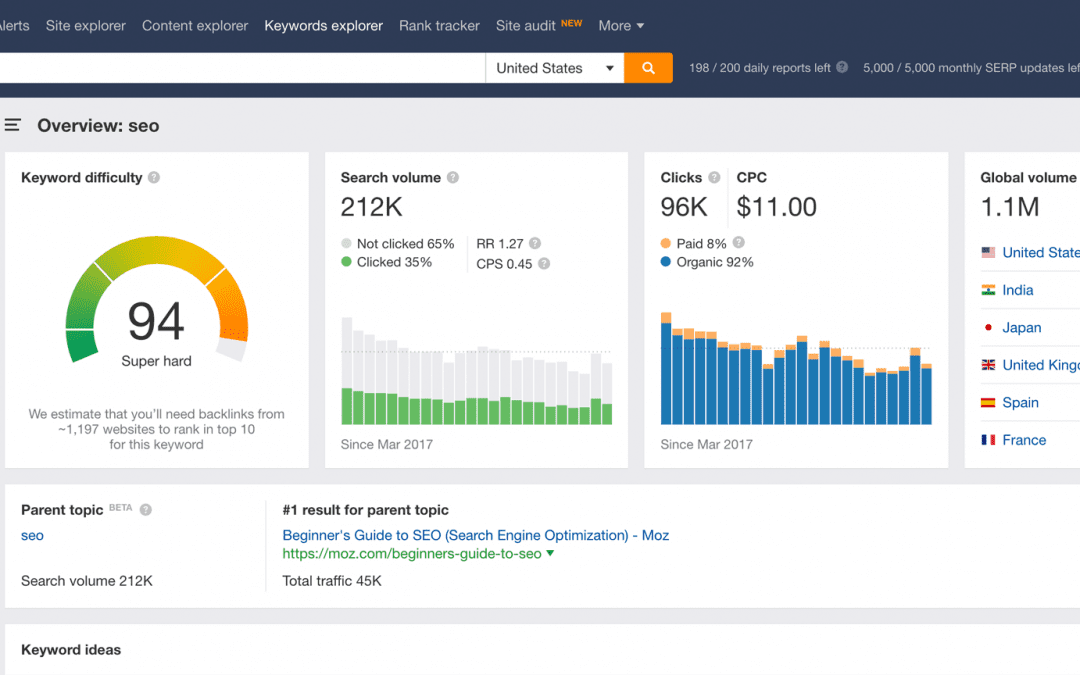Thirty years ago, I doubt you would have been able to explain how important blogging is to modern business. Of course, that’s because, at the time, the internet was in its absolute infancy. Since then, blogging has been an integral part of most businesses that operate online. Blogging has become an incredibly important tool for businesses that are trying to improve their SEO presence online. This is because the statistics have shown that blogging has a massive impact on your search rankings. Businesses that blog will get up to as much as 434% more traffic to their websites. This is why you need to keep on top of it to create an SEO-friendly blog, especially if you’re an online business.
It may be tempting to see the art of blogging as merely typing words onto a page and hoping that’s enough. That’s not blogging, or not SEO-friendly blogging anyway. There’s a number of different elements which go into improving the SEO-friendliness of your blog. Making sure to keep on top of these aspects will cause your traffic and backlinks to increase. That’s why we’ll be going over some of the best ways for you to make your blog better for SEO. Then you will see the traffic and sales steadily increase.
Do Your Keyword Research
Keyword research is quite possibly the most important aspect of blogging. When you’re writing a blog post, chances are that you’re going to want to rank for certain phrases. This means that when someone searches for ‘accountants in Worcester’, you want to be close to the top. So, when you’re writing your posts, you need to be aware of which keywords are going to get you the best return. Some keywords are more competitive than others and it will be harder to get highly ranked for them. Keyword research also helps you to identify less competitive alternatives that can still help to increase your traffic.

If you’re not particularly confident in your ability to identify keywords yourself, don’t worry. There are dozens of different tools online that can help you to identify and target the best keywords for your business. One of the best tools that I would identify for this would be Ahrefs Keyword Explorer. This tool can give you thousands of keyword suggestions for your business and they provide specific, accurate data on the search volume for these keywords. The tool also ranks the difficulty of getting listed for those particular keywords. This is really helpful if you want to find lesser-used keywords that still have great upside.
Plan Your Blog Content
Planning is actually in my opinion, one of the most important things about blogging. This is particularly true if you’re in a very specific industry niche. Think about it this way, blogging can take a long time. I’ve been writing for years now and it still takes me a couple of hours to create a high-quality blog post. This is why planning is important. You need to set aside the time for your blog writing. If you don’t have the time or skills to do this yourself, then I would recommend that you hire a copywriter to do it for you, or try to find someone with a little less experience that wouldn’t mind helping you in return for some experience and a small fee.
Furthermore, you should plan to make sure that your supply of content doesn’t run out. When you work in a very narrow industry, it can be quite difficult to keep coming up with new and fresh content. Planning your content in advance, rather than thinking of it on the day will help you to make sure that you are never stuck on what to create. At DMS, I tend to keep a weekly content plan that can be changed depending on how busy I am for that week. Although, I always try to post a minimum of three posts per week.
Keep An Eye On Content-Length For an SEO-Friendly Blog
Content length is something that actually has a massive impact on your SEO. Despite the fact that people in the modern-day have shorter attention spans than we used to, long content is still one of the best forms you can use. That’s not to say that you can’t succeed with shorter content, we write a mixture of long-form and short-form content on our site. This way, there is something for every type of reader. Despite this, statistics have shown that long-form content tends to perform better for SEO purposes. Try and change it up, but remember that it’s better to post something than nothing at all.

If you’re having trouble with creating longer-form content, then you should do some research. Read long-form content from people in your industry and your competition, see what they’re writing about. You should never copy their content, but if you can find something to light some inspiration in you, there’s nothing wrong with that. Once you have an idea of what people in your industry are writing about, you should have no shortage of long-form content ideas. Then, you’ll be able to take great strides with your SEO strategy. Content length is critical to an SEO-friendly blog.
Think About How Often You Will Be Posting For An SEO-Friendly Blog
This is another thing that is critical to creating an SEO-friendly blog. Google and other search engines take the frequency of which a website is updated into account. You may be wondering what this has to do with blogging? Every time you update your blog on your website, that counts as updating your website. This is one of the main reasons why blogging is such an important tool for SEO. Websites that are frequently updated tend to perform better than those that don’t. Research has shown that for small business blogs trying to boost SEO, you should be posting between 3-4 times per week.
If you can’t post that frequently, then don’t be disheartened. It’s still possible to get results from your blog when you’re posting once or twice a week, although the numbers will be significantly lower. The more you continue to post to your blog, the more traffic you will end up getting. You should bear in mind though that SEO takes time to develop. You could upload 50 blog posts on your site in the same number of days and you still wouldn’t see the immediate results you expect. Nurturing SEO is like nurturing a child, you have to possess patience and you can’t quit.
Is Your Content Quality That of an SEO-Friendly Blog?
This is another very important thing to consider when you’re blogging. It’s not enough to just push out content on a regular basis. You need to make sure that your content is actually high-quality so that people want to read it. This is because social media is also a critical part of SEO blogging. If you’re releasing good content on a regular basis then you’re going to see that more people will share your content, which in turn will increase your traffic and SEO success. It’s okay if you’re not an instant blogging rockstar, it took me a long-time to get to the level I’m at now.
![How Long Should a Blog Post Be? [Useful Blogging Statistics] | Sword and the Script](https://www.swordandthescript.com/wp-content/uploads/2019/02/l_Key-Blogging-Statistics-of-Successful-bloggers.jpg)
If you’re struggling with creating quality content for yourself, then once again you should be doing research. See what your competitors are doing and what blog content is working well for them. Once again, don’t copy what they’re doing, but you should make a note of what works well, that way you will be able to tailor your content to your audience much more effectively. Another big part of making sure you have high-quality content is understanding who your audience is and what they find interesting. High-quality content is going to serve you better in the long term than a plethora of bad content.
Be Aware of Content Structure and Headings
This is something that can be frequently overlooked when attempting to create an SEO-friendly blog. When you’re writing, you may not be thinking about your headings and the structure of your writing. This is especially true if you’ve not got much blog writing experience and that can be forgiven. Still, making sure that you have the appropriate headings and structure for your content is critical making sure it performs well for SEO. If you’re unsure about how you should structure your blog posts, then you should have a look at some online guides for this. Once you read these, you will have a much better idea of how to order everything.
SEO-Friendly Blogs Link To Other Pages
There is so much focus placed on the importance of building backlinks to other sites, that many people forget about the importance of building external links. When you link to high-authority, trustworthy websites, you get an opportunity to bring a larger audience to your content and increase your overall digital footprint. You may even find that in offering backlinks to other sites, you may find some links back to you in return. It’s likely that you would need to cultivate these relationships to get this though.

In addition to the material benefits, there are also some immaterial benefits to creating external links. In a roundabout way, giving links that move away from your page can show that you have cared for your reader. You are potentially losing them in the process of linking them with information that they may find helpful. Just be careful to make sure that you’re linking to secure websites that have a good reputation. Broken links or unreputable sites may cause more damage to your SEO ranking than you would gain from it.
Make Use of Relatable Keywords
You may have the perfect keyword for your content, but that doesn’t mean that you should forsake the use of related keywords in your content. They’re incredibly useful. So what actually are they? A related keyword is a type of keyword that has a relation to your primary keyword, which could be a synonym or variant of the original keyword. You can also help yourself with your content plan by using related keywords. As mentioned previously, you should use a keyword research tool to identify the best-related keywords for your content. This will put you in good stead for your content strategy.
So how do related keywords help you? When you make use of them on your blog post, they help to better explain your content to the search engine. This will help to improve your ranking and will help the search engine to pull up your content in related searches. They can also help you to understand variations of what people are searching for when looking for products and services similar to yours. Finally, you can also use the related keywords to inspire you to create more content on your blog, which should reduce the planning time for your content strategy.
Use Specific SEO Plugins
This is a really big one for me when creating an SEO-friendly blog. I’m a firm believer in the fact that making use of the right tools will help you to fly up the rankings. One of my personal favourite SEO plugins for blogging is Yoast SEO. This plugin comes with an array of useful tools to help your content perform better for SEO. It works on a traffic light system and will provide you with insights on how to improve your content, this then auto-updates once you complete the required tasks. It also comes with a feature that helps to improve the quality of your writing by giving you a ‘readability score’.

One of the main benefits of using a plugin like this is that it can even the greenest SEO novice to create something great. With Yoast specifically, there is a free version that still provides a pretty powerful service. This is great if you’re a business with a really small marketing budget, but the paid version and the features that you unlock from it are definitely worth the price. My suggestion would be to play around with the free version of Yoast and upgrade when you have the money to do so. You won’t regret it.
Conclusion
In closing, it can be seen that creating an SEO-friendly blog can be a very difficult undertaking. You first need to make sure that you’re up to date with your keyword research. This also includes the use of related keywords in your content to further boost your rankings. Then, you need to make a plan for what content you are going to create, how often you will be blogging and when you will be posting. Having a plan will help you to post more frequently and get the most out of your content strategy. Keeping an eye on the length of your content is also key.
When creating your content, it’s not enough to just think about what you’re writing. It’s not even enough to just think about that and the length. You’re also going to have to factor in the structure of the blog posts and how those are going to influence your SEO. As a final suggestion, it would be incredibly useful for you to use an SEO-specific plugin to help you with your blogging. The main one that I would suggest is the one that I use, Yoast SEO. Of course, if you don’t want to do the content yourself, then you can always get me and the Driven Media Solutions team to help you with that.

